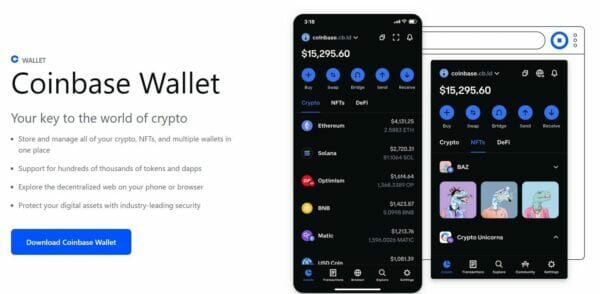Here Are The 3 Ways To Store Your Cryptocurrency You Need To Know…
James Howells has been digging and sifting through a landfill for 8 years…
He was an early adopter of bitcoin. He purchased and mined for the coin roughly a decade ago. And as a savvy bitcoiner, he stored his bitcoins on a physical hard, or what’s known as a “Hardware Wallet,” which is a type of cold storage used for long-term storage of your cryptocurrency.
Unfortunately, during a spring clean he tossed the hard drive into the trash. Of course, at this time bitcoin wasn’t worth much so he may not have thought much of it at the time.
That hard drive contained 7,500 bitcoins.
In late 2013 when bitcoin went on its first historic run, the price of one bitcoin went from around $13 to more than $1,000.
Obviously, at $1,000 that hard drive was worth more than $7.5 million. When bitcoin traded for $60,000, that wallet contained nearly half a billion dollars in bitcoin.
Howells is still searching for his lost treasure…
Of course, Howells’ story isn’t unique. As the price of bitcoin soared in value, hundreds of people have stories of stashing bitcoin on a USB drive then losing it, or the file with a private key, which is the password to your online wallet being wiped from a computer after it’s been reset.
So let this be a good reminder that it is extremely important to learn how to safely store your cryptocurrencies.
The 3 Types of Cryptocurrency Storage
First, it’s important to understand the types of storage and how best to use each.
Crypto Exchange
The most basic storage route is an exchange. This is where you buy and sell cryptocurrencies, and any cryptocurrency that you buy is stored on that exchange’s server.
Coinbase is an example of an exchange. Other exchanges include Gemini, Kraken, and Binance.

The nice thing about these exchanges is that it makes it easy to convert your local currency (dollars, euros, yens, etc.) into cryptocurrency.
The downfall is that these exchanges are not great places for the long-term storage of your cryptocurrencies. That’s because you are trusting the exchange to protect your cryptocurrency, which makes them giant targets for hackers. If the exchange gets hacked and steals all the cryptocurrency, then there’s not much you can do… you essentially got robbed and it’s a very slim chance you’ll see any of your cryptocurrency again.
Digital Wallets
Digital Wallets are sometimes referred to as “hot wallets,” meaning they are connected to the internet. But these cryptocurrency wallets provide a safe place where you can store your proof of ownership of the cryptocurrency you’ve bought.
One of the top wallets for beginners is the Coinbase Wallet.
It can be downloaded as an app for Apple or Android. It has an interface that is intuitive, and the wallet is fully integrated with the company’s exchange, which makes it easy to conduct transactions.
It can be downloaded as an app for Apple or Android. It has an interface that is intuitive, and the wallet is fully integrated with the company’s exchange, which makes it easy to conduct transactions.

Source: Coinbase
Unlike the company’s exchange, the Coinbase Wallet is is noncustodial. That means that only you have access to your wallet’s private key, which is generated with a 12-word recovery phrase when you sign up – if you lose this recovery phrase you will be locked out of your account.
Another crypto wallet to consider is Exodus.
Hardware Wallet
The hardware wallet is a physical device you can hold in your hands (think thumb drive). It’s a special type of wallet which stores the user’s keys in a secure hardware device.
Hardware wallets are not connected to the internet, so they are known as “cold wallets.”
The beauty of hardware wallets is that this is the safest form of cryptocurrency storage as they are immune from computer viruses, hackers, and even overbearing government officials.
To use a hardware wallet you simply plug this small device into your laptop or computer via a USB drive.
What’s great about these devices is that the only thing they are designed to do is store cryptocurrencies.
How to Use A Hardware Wallet
When you first set up your hardware wallet, you’ll generate a 24-word phrase. It’s very important you back up and store this phrase safely. If anything happens to your device, you’ll need that 24-word phrase to regenerate your wallet.
You’ll also set up a pin code on the device. You’ll need to enter this pin code each time you use the device.
Each hardware wallet manufacturer has an interface for using the wallet. For example, Ledger Wallet provides a Chrome extension. To use the hardware wallet, you will open the interface, plug in your device, and then enter your pin code to activate it.
Once the interface is open, using the hardware wallet is just like using any other wallet. The major difference is that any transactions sent from a hardware wallet must be confirmed using the hardware device.
Over at Capital Wealth Letter, we have a specific hardware wallet we recommend. And while we’re saving that for premium subscribers only, there are plenty of options out there to choose from.
Editor’s Note: The future of crypto is STILL inevitable. And our research team has released a report detailing 3 coins that could unleash $3 trillion worth of wealth into the hands of everyday Americans.
If you’ve never bought crypto before… or if you think you’ve missed the boat… this is that rare second chance you’ve been waiting for. Click here to learn more now.
